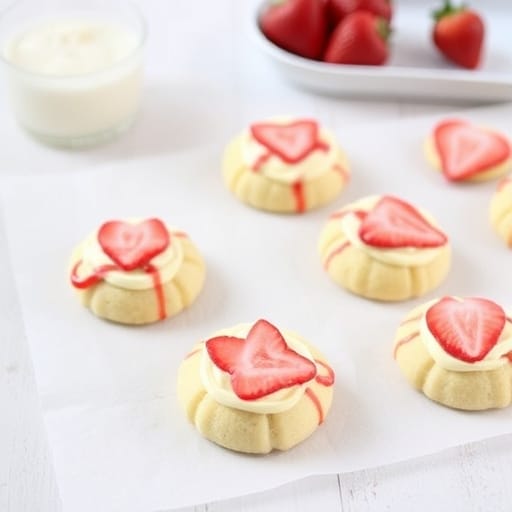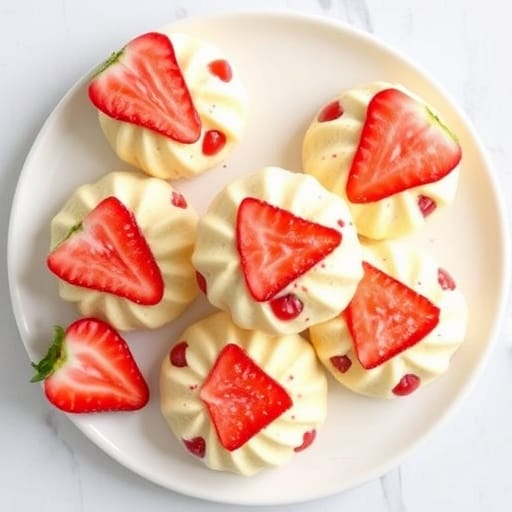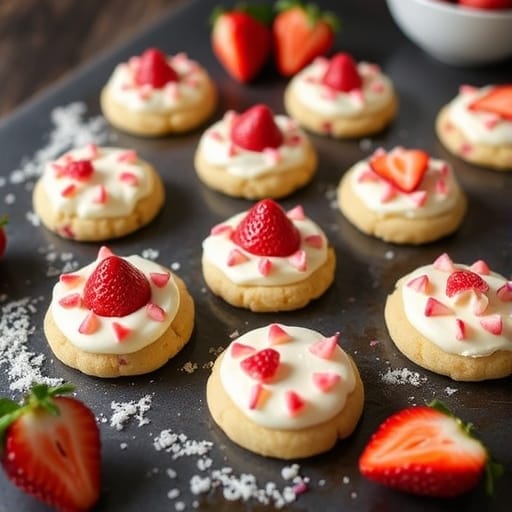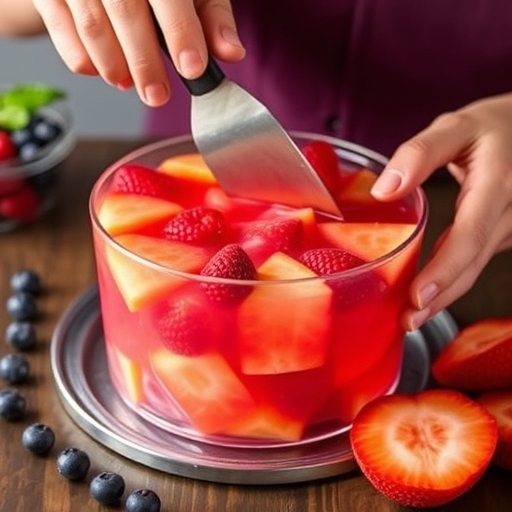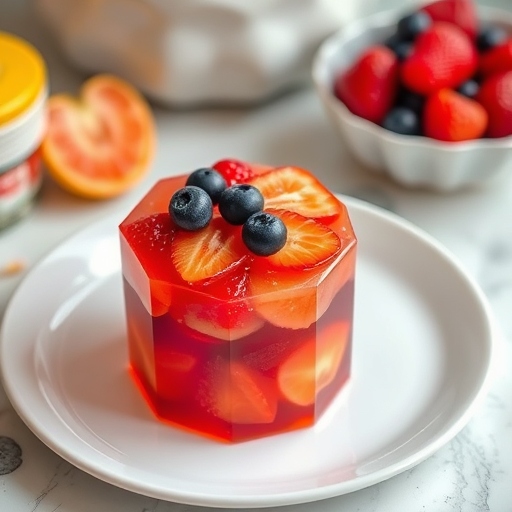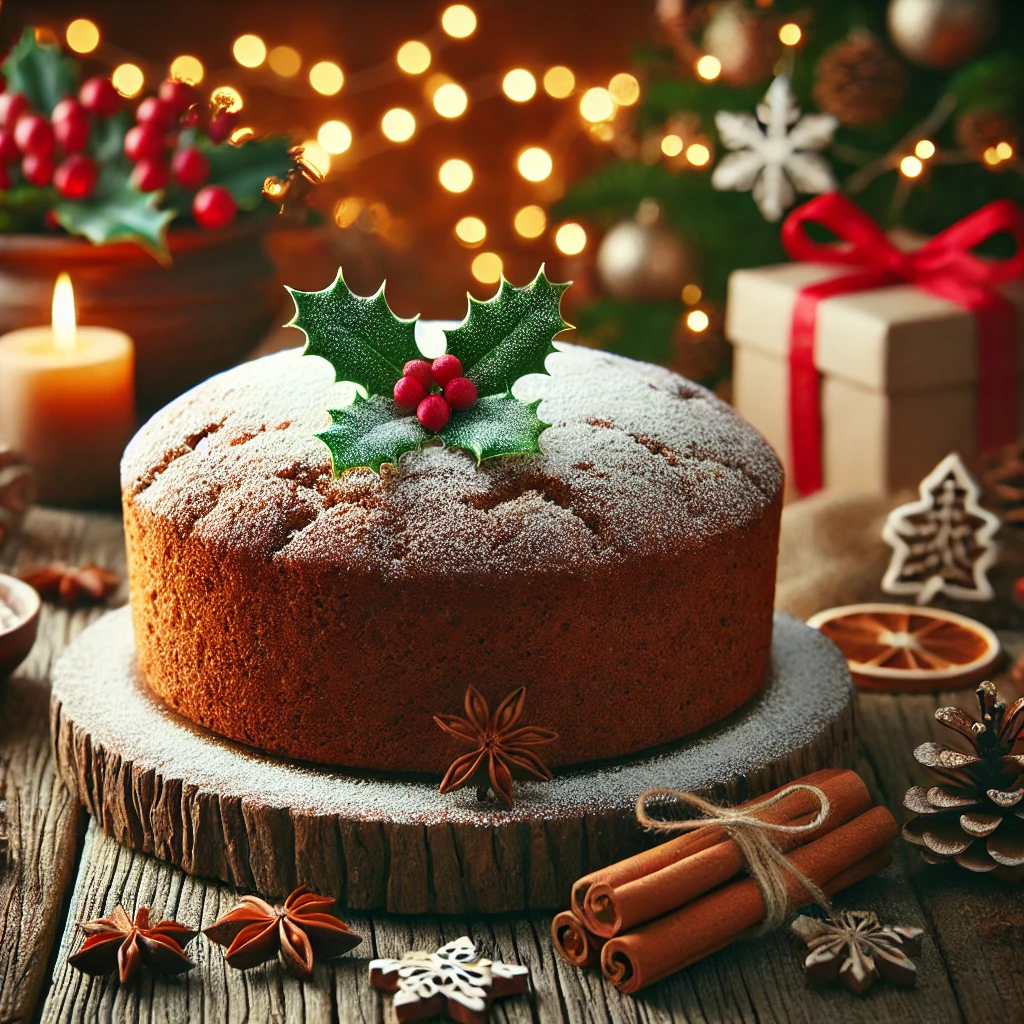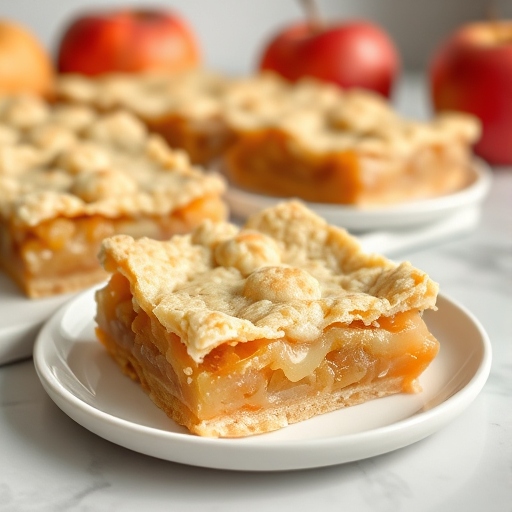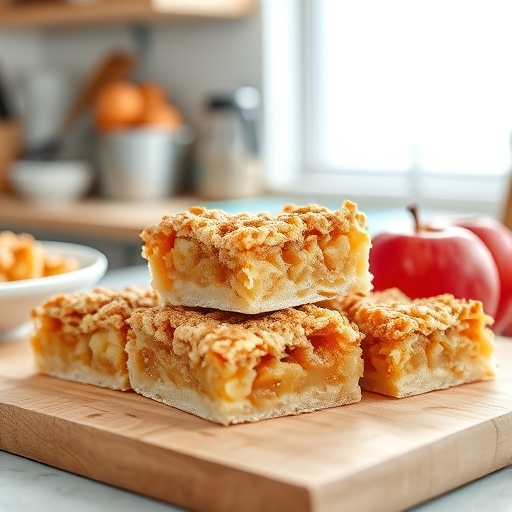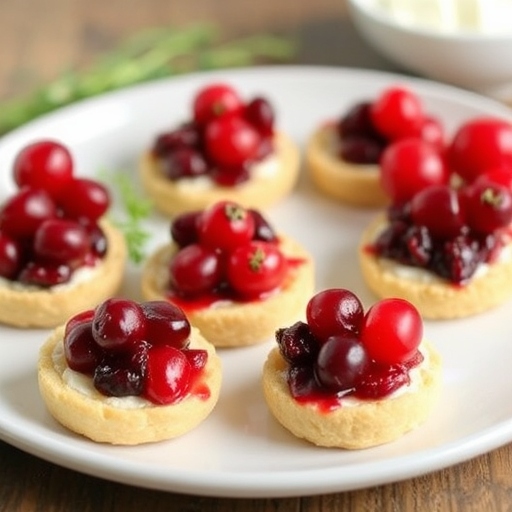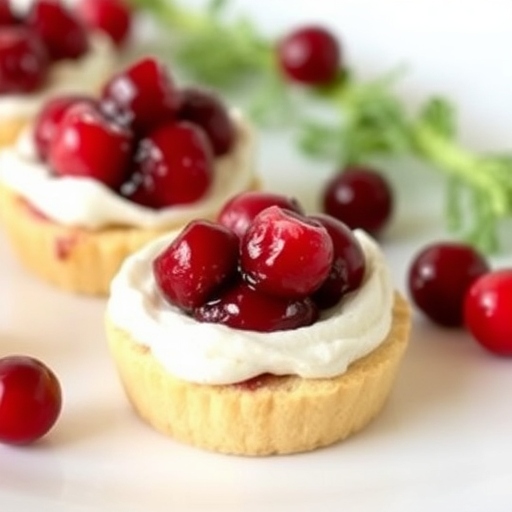Ever tried baking something that not only tastes amazing but also looks stunning? Imagine a treat that combines a vibrant color with a unique earthy flavor. That’s exactly what you get with this simple recipe. Perfect for any occasion, these baked delights are a fresh twist on classic favorites.
With just 15 minutes of prep time, you can create a batch of crispy-chewy treats that are as visually appealing as they are delicious. Whether you’re hosting an afternoon gathering, preparing holiday gifts, or looking for a healthier snack option, this Matcha Green Tea Cookies recipe fits the bill. The natural hue of these treats makes them Instagram-worthy, especially when you use high-quality ingredients like Maeda En matcha powder.
Ready to impress your friends and family? Let’s dive into this easy-to-follow guide and discover how you can whip up these delightful bites in no time.
Key Takeaways
- Introduce a unique twist on classic recipes with vibrant color and earthy flavor.
- Enjoy a simple recipe with just 15 minutes of prep time.
- Perfect for occasions like afternoon tea, holiday gifts, or healthy snacks.
- Create Instagram-worthy results with high-quality matcha powder.
- Recommended products like Maeda En matcha enhance the final outcome.
Introduction to Matcha Green Tea Cookies
Discover how a centuries-old ingredient can transform your treats. This vibrant powder, known for its earthy flavor, has been a staple in Japanese culture for generations. Originally used in traditional ceremonies, it has now found its way into modern baking trends worldwide.
When choosing this ingredient, you’ll encounter two main types: culinary-grade and ceremonial-grade. Culinary-grade is ideal for baking, as it retains its bold color and is more affordable. Ceremonial-grade, while pricier, is often reserved for drinking due to its smoother taste.
The unique bitterness of this powder pairs beautifully with sweet additions like white chocolate or nuts. This balance creates a flavor profile that’s both rich and refreshing. Many bakers have shared how their appreciation for this ingredient has grown over time, thanks to its versatility and depth.
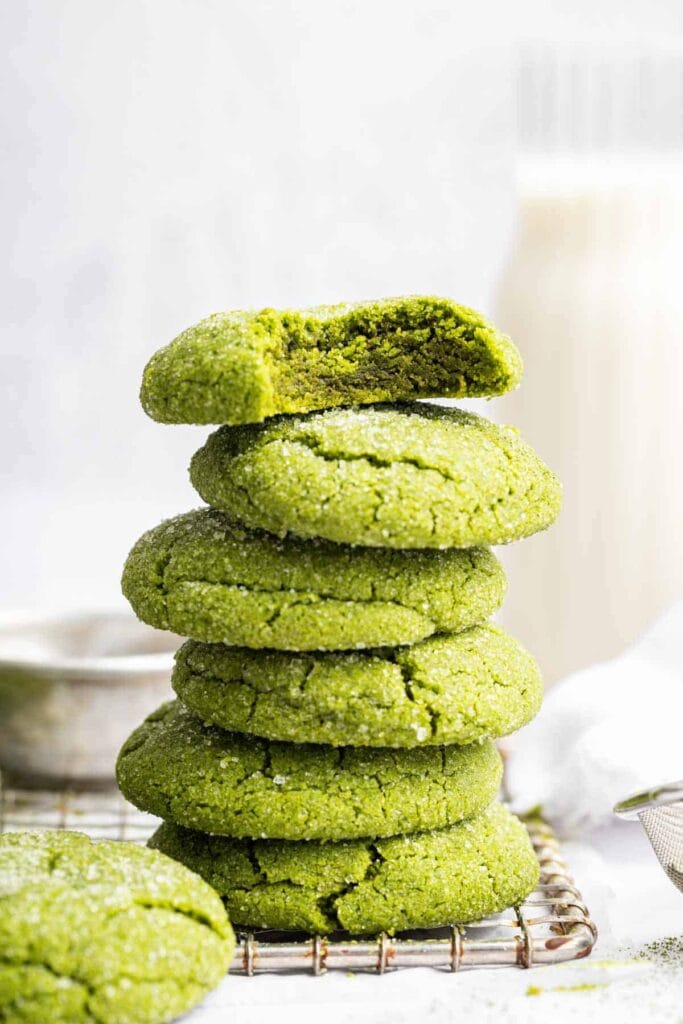
In Japan, this ingredient is a key component of desserts like wagashi, which are often served during tea ceremonies. Its cultural significance adds an extra layer of meaning to your baking. Whether you’re a seasoned baker or a beginner, incorporating this ingredient into your recipes is a surefire way to impress.
- Learn about its origins and evolution in culinary arts.
- Understand the difference between culinary-grade and ceremonial-grade options.
- Explore how its earthy taste complements sweet pairings.
- Discover its role in Japanese desserts and traditions.
Ingredients for Matcha Green Tea Cookies
Ready to elevate your baking game with a few simple ingredients? The right components can make all the difference in achieving vibrant, flavorful results. Let’s break down what you’ll need to create these delightful treats.
Essential Ingredients
Start with the basics: all-purpose flour, baking soda, and granulated or brown sugar. These form the foundation of your dough. For a rich, buttery texture, use unsalted butter at room temperature. This ensures proper creaming and a smooth consistency.
Eggs and vanilla extract add moisture and depth to the flavor. The star ingredient, matcha powder, is non-negotiable. Opt for high-quality Japanese brands like Maeda En or Aiya for a vibrant color and authentic taste.
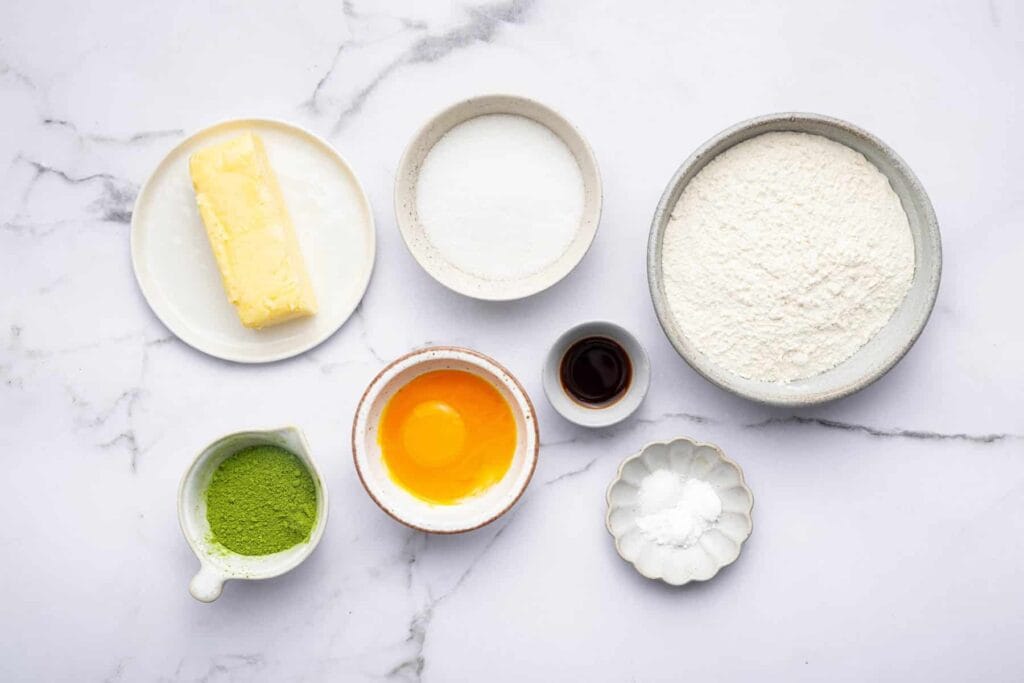
Optional Add-ins
If you want to enhance your treats, consider adding white chocolate chips. Their sweetness balances the earthy notes of the powder. For a crunchy twist, try macadamia nuts or a sprinkle of sparkling sugar.
Avoid using culinary-grade matcha, as it can result in a dull color. Also, steer clear of milk chocolate chips, as they can overpower the delicate flavor profile.
Step-by-Step Recipe for Matcha Green Tea Cookies
Transform your kitchen into a bakery with this simple yet stunning recipe. Follow these easy steps to create a batch of vibrant treats that are as delicious as they are beautiful. With just a few ingredients and some patience, you’ll have a dessert that’s sure to impress.
Preparing the Dough
Start by sifting your flour and matcha powder into a bowl. This step prevents clumps and ensures a smooth texture. Next, cream the butter and sugar together for about one minute until the mixture is light and fluffy. Add the eggs and vanilla extract, mixing until fully combined.
Gradually incorporate the dry ingredients into the wet mixture. Use a spatula to fold in white chocolate chips for a sweet contrast. Once the dough comes together, chill it in the fridge for at least one hour. This step reduces spreading during baking and enhances the flavor.
Baking the Cookies
Preheat your oven to 350°F and line your baking sheets with parchment paper. Scoop the chilled dough using a 3-tablespoon ice cream scoop for even portions. Place the scoops on the prepared sheets, leaving enough space between them.
Bake for 10-12 minutes, or until the edges turn golden. For accurate results, use an oven thermometer to monitor the temperature. Once baked, let the treats cool on wire racks before serving. Enjoy the perfect balance of crisp edges and chewy centers!
Tips for Perfect Matcha Green Tea Cookies
Achieving bakery-quality results at home is easier than you think. With a few simple tricks, you can create treats with the perfect texture, vibrant color, and minimal spread. Here’s how to make every batch a success.
Start by browning your butter for a nutty, rich flavor. This step adds depth to your dough and enhances the overall taste. Once browned, let it cool to room temperature before mixing. This ensures even blending and a smooth consistency.
For the best results, sift your powder to avoid clumps. This step guarantees a vibrant hue and even distribution. If your kitchen is warm, chill the dough for at least an hour. This prevents excessive spreading and helps maintain the shape of your treats.
When baking, use a light-colored baking sheet to monitor the browning process. Dark pans can cause uneven baking. For consistent results, test your oven temperature with a $7 thermometer. This small investment ensures your treats bake evenly every time.
| Tip | Benefit |
|---|---|
| Brown butter | Adds nutty flavor and richness |
| Chill dough | Reduces spreading and maintains shape |
| Add bread to storage | Retains softness and freshness |
“The key to perfect baked goods lies in the details. From temperature control to ingredient prep, every step matters.”
Finally, store your treats with a slice of bread in an airtight container. This trick keeps them soft and fresh for days. With these tips, you’ll create bakery-worthy results every time.
Variations of Matcha Green Tea Cookies
Want to add a creative twist to your baking? These variations let you experiment with flavors and textures while keeping the base recipe intact. Whether you prefer a nutty crunch or a sweet coating, there’s something for everyone.
For a classic option, try adding white chocolate chunks. Their creamy sweetness balances the earthy notes perfectly. If you’re a fan of texture, toss in some chopped macadamia nuts or almonds. They add a satisfying crunch to every bite.
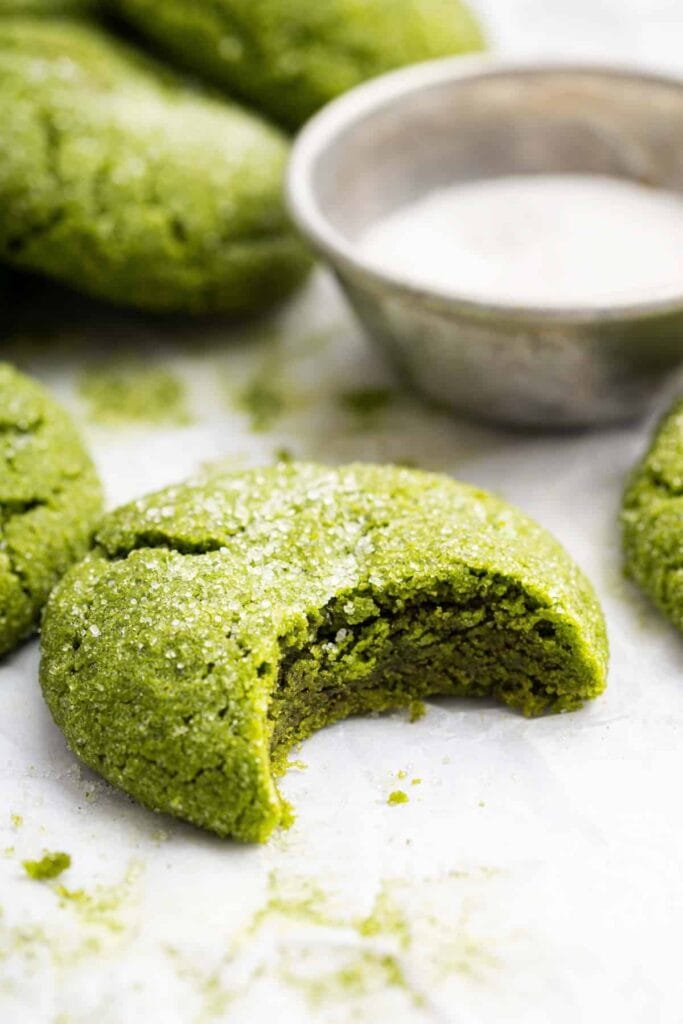
Looking for a sweeter option? Roll the dough in coarse sugar before slicing. This creates a sparkling, sugary crust that’s irresistible. For a deeper flavor, brown the butter before mixing it into the dough. This method, inspired by Cooking Therapy, adds a rich, nutty aroma.
If you’re following a gluten-free diet, substitute the flour with a 1:1 gluten-free blend. This ensures your treats are just as delicious without compromising on texture. Avoid using milk chocolate, as its strong flavor can overpower the delicate profile of the main ingredient.
- Matcha Chocolate Chip: Use white chocolate chunks for a sweet contrast.
- Nutty Matcha: Add chopped macadamia or almonds for crunch.
- Sugar-Coated: Roll the dough in coarse sugar for a sparkling finish.
- Brown Butter Matcha: Brown the butter for a richer, nuttier flavor.
- Gluten-Free: Swap flour with a gluten-free blend for dietary needs.
These variations are perfect for experimenting with new recipes. They allow you to customize your treats while keeping the process simple and fun. Try one or mix and match to find your favorite combination!
Storing and Freezing Matcha Green Tea Cookies
Want to keep your baked goods fresh and ready for any occasion? Proper storage is key to maintaining their texture and flavor. Store your treats in an airtight container with parchment paper between layers. This prevents sticking and keeps them fresh for up to four days at room temperature.
If you’re planning ahead, freezing is a great option. Shape your dough into logs or balls and freeze them on a tray. Once solid, transfer them to a freezer-safe bag. These can last up to two months. When you’re ready to bake, simply thaw the dough for 10 minutes before slicing.
Already baked? Freeze them in an airtight container for up to two months. Thaw at room temperature for 15 minutes before serving. If your treats feel stale, revive them with a quick 5-second zap in the microwave.
Label your freezer bags with dates to track freshness. These simple steps ensure your baked goods stay delicious and ready to enjoy anytime.
Also Read : Matcha Green Tea
Conclusion
Wrap up your baking journey with a recipe that’s both simple and versatile. Whether you’re following a specific diet or experimenting with flavors, this guide adapts to your needs. Share your creations on social media using hashtags like #kirbiecravings or #justonecookbook to inspire others.
Looking for more ideas? Explore related recipes like lattes or mochi to expand your culinary skills. Beyond its vibrant color, this ingredient offers health benefits, including antioxidants and a calm energy boost.
Thank you for trying this recipe. Your feedback helps improve future guides. Happy baking, and enjoy your delicious results!



